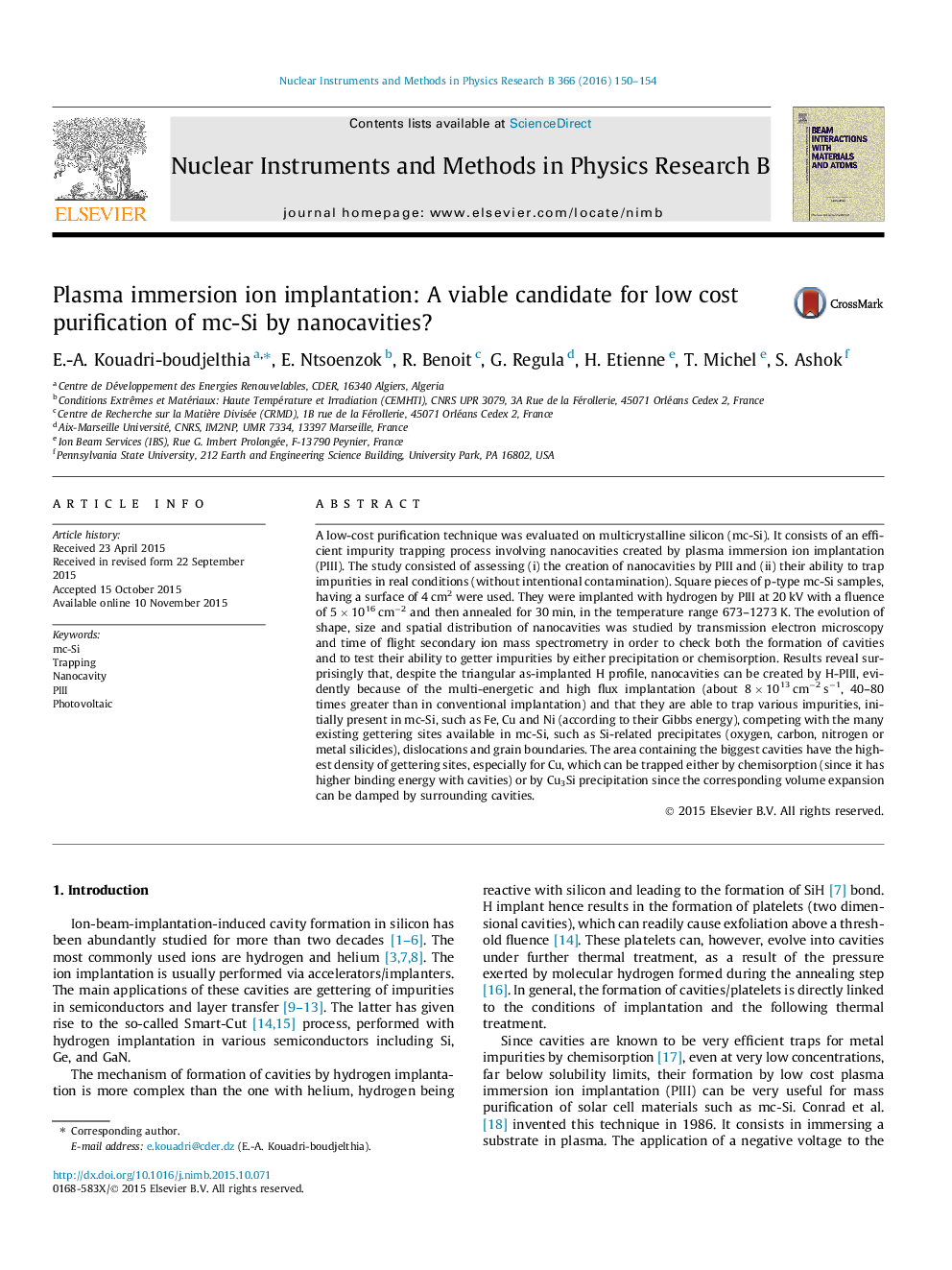| کد مقاله | کد نشریه | سال انتشار | مقاله انگلیسی | نسخه تمام متن |
|---|---|---|---|---|
| 1682185 | 1518655 | 2016 | 5 صفحه PDF | دانلود رایگان |

• The ability of the H implantation by PIII, to form cavities in mc-Si.
• The difference between PIII and Classical implantation (multi and mono-energy).
• The good trapping ability in real conditions (low impurities concentration).
A low-cost purification technique was evaluated on multicrystalline silicon (mc-Si). It consists of an efficient impurity trapping process involving nanocavities created by plasma immersion ion implantation (PIII). The study consisted of assessing (i) the creation of nanocavities by PIII and (ii) their ability to trap impurities in real conditions (without intentional contamination). Square pieces of p-type mc-Si samples, having a surface of 4 cm2 were used. They were implanted with hydrogen by PIII at 20 kV with a fluence of 5 × 1016 cm−2 and then annealed for 30 min, in the temperature range 673–1273 K. The evolution of shape, size and spatial distribution of nanocavities was studied by transmission electron microscopy and time of flight secondary ion mass spectrometry in order to check both the formation of cavities and to test their ability to getter impurities by either precipitation or chemisorption. Results reveal surprisingly that, despite the triangular as-implanted H profile, nanocavities can be created by H-PIII, evidently because of the multi-energetic and high flux implantation (about 8 × 1013 cm−2 s−1, 40–80 times greater than in conventional implantation) and that they are able to trap various impurities, initially present in mc-Si, such as Fe, Cu and Ni (according to their Gibbs energy), competing with the many existing gettering sites available in mc-Si, such as Si-related precipitates (oxygen, carbon, nitrogen or metal silicides), dislocations and grain boundaries. The area containing the biggest cavities have the highest density of gettering sites, especially for Cu, which can be trapped either by chemisorption (since it has higher binding energy with cavities) or by Cu3Si precipitation since the corresponding volume expansion can be damped by surrounding cavities.
Journal: Nuclear Instruments and Methods in Physics Research Section B: Beam Interactions with Materials and Atoms - Volume 366, 1 January 2016, Pages 150–154